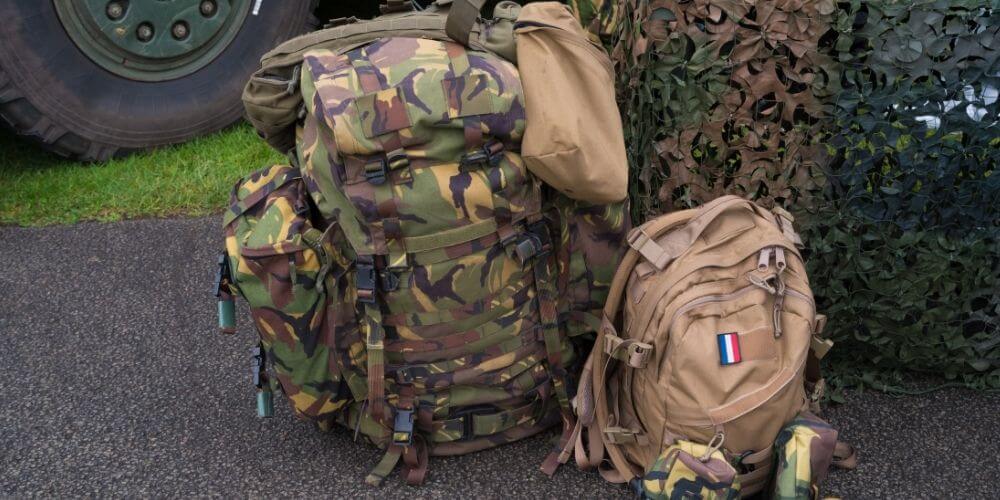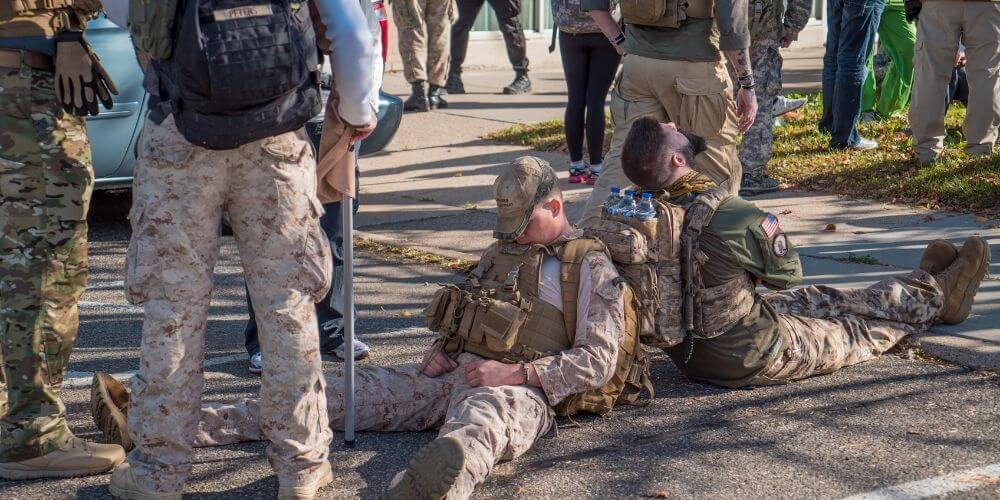Getting better at rucking can seem like a daunting task especially when you feel like you hit a plateau. Rucking is a way to improve your fitness and to provide some great benefits for your body.
In this article, we are going to show you how to get better at rucking. There are many ways that you can improve your rucking skills, but if you want to begin with the basics, these 11 tips will help you out.
How to Get Better at Rucking
Rucking is a form of exercise that is gaining in popularity as a result of its low impact on the body. Regardless of the motivation, if you want to ruck, you need to know how to improve and do longer rucking sessions.
Before Starting to Ruck
In order to get better at rucking preparation is key. Here are a few things to do before starting to ruck.
Weight Distribution

Many people don’t know how to properly prepare their rucksacks for a ruck march. Always put the heavier weight above. Try to keep it close to the level of your shoulders.
Having the weight down will also drag you down and you will consume more energy because it requires more effort. This can also cause knee and back pain which can really hurt in the long run.
Invest in the Best Boots You Can Buy
Walking long distances with a heavy pack on your back is a skill that few people master. It’s a combination of balance, technique, and strength. Good boots will help you get better at rucking, but it’s also important to break them in before going on a ruck march.
Some boots can work better than others. Good ankle and foot support is the most important thing in a boot. Standard-issued boots provide a very good choice for rucking.
Good Socks, Underwear, and Chaffing Powder
Because people don’t realize that the soles of your feet will encourage chafing, they also neglect other parts like thighs and underarms. Chaffing powder is really nice to have.
The extra money that you spend on your socks is well worth it if the quality will last through long sessions. Bring an extra pair of good, moisture-wicking, and durable pairs with you on.
Tips While Rucking
Let’s take a look at what you can do during the rucking session to improve.
Start Light
Start with 10%-15% of your body weight as a rucking weight over 2-4 miles. If this is your first time rucking you can skip the timer. Proceed at your own pace.
Excessive weight and speed may trigger significant injury to tendons, muscles, and knee joints.
Rucking is Not Running
You can take longer steps instead of running if you’re falling behind or slowing down. Running can cause some problems like smacking your heavy rucksack on the back of your spine. If you try to run you will also consume more energy for not a lot of benefit.
Remember to Hydrate and Eat Protein

Water is very important during a ruck march. Drink plenty of water throughout, a good deal of water before, and lots of water after the march.
You will lose electrolytes while rucking, so think about stocking up on junk food which can help keep the water in your system.
Daydreaming
Daydreaming is a state of mental detachment from the outside world, where one’s thoughts flow freely.
Think about anything other than gravity pressing you into the ground or the pounds exerted on your body by the ruck.
Combine Workouts
Rucking is a great body and cardio exercise routine, but you can make it more challenging by doing calisthenics with your weighted backpack.
Here is What You Need to Do After the Rucking Session
Now that you finished your rucking session there are a few things you need to do:
Stretching
Stretching can reduce the muscle soreness and fatigue that comes from rucking. Stretch your hamstrings and quadriceps in order to help prevent any muscle fatigue.
Take Care of Your Blisters
Blisters are a common issue for many athletes, especially when they are new to an activity. The best way to prevent blisters is by wearing the right shoes and socks.
Moleskin is great for blisters. Moleskin is a soft cotton padding that helps form a protective barrier over the blister, while also relieving pain.
Conclusion
So, How to Get Better at Rucking?
You should start low and work your way up to a heavy weight.
It is important to gradually increase the amount you are rucking as well as the weight. It might take a little time, but it will be worth it in the end.
If you follow these simple steps, you’ll be able to see progress in your rucking abilities with time.



